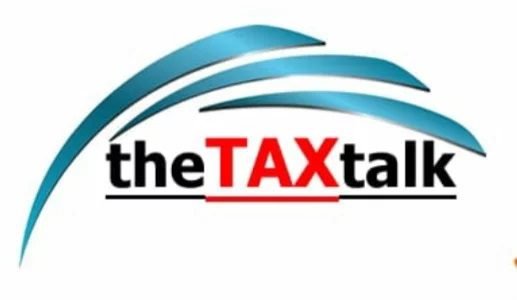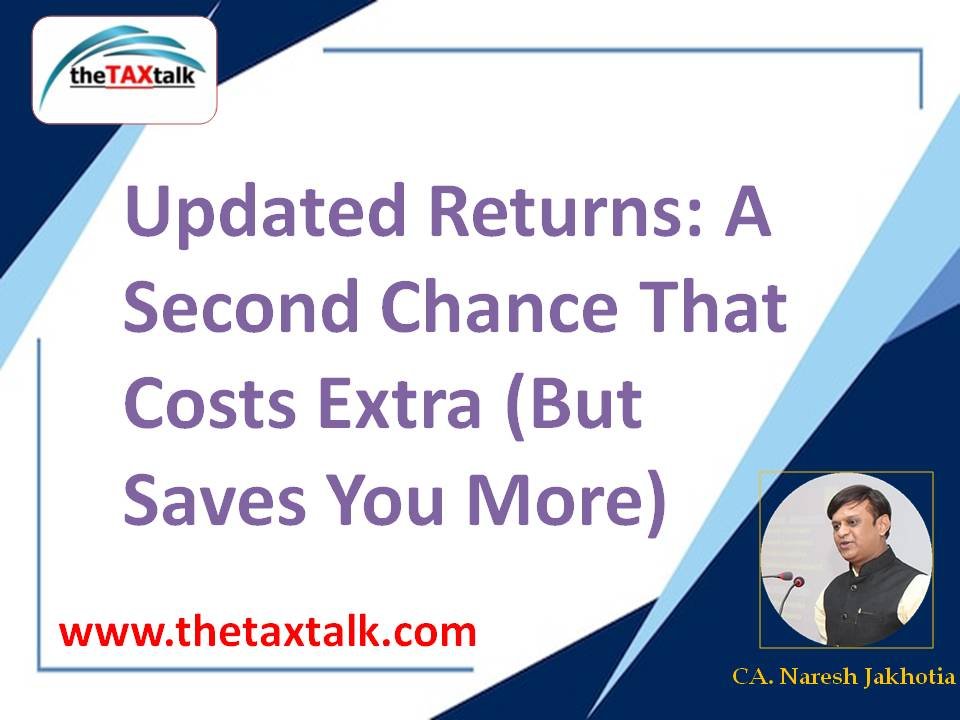![]()
Updated Returns: A Second Chance That Costs Extra (But Saves You More)
Missed declaring some income? Skipped filing a return altogether? The tax department is giving you a second shot to set things right—but you’ll need to pay for the privilege. Here’s everything you need to know about the Updated Return scheme and how not to mess up your second chance.
Original, Belated, Revised Return – What’s the Difference Anyway?
Income Tax Return filing is an obligation which is required to be carried out by the taxpayers in a time bound manner within the due date. The return filed within the due date is referred to as the “Original Return”. If the return could not be filed within the due date then such person can file the “Belated Return” under an extended period with a certain late fee. Further, if the person notices the error or omission in the original or belated return then such person can rectify it by filing the “Revised Return”. However, all above returns can be filed up to a maximum of 9 months only after the end of the financial year. Few years back, there was a time period of around 2 years for taxpayers to file the belated or revised return. However, the same has been reduced to just 9 months over the years. Now, after 9 months, the only option left is filing the “Updated Return” U/s 139(8A) of the Income Tax Act-1961.
All about Updated Return:
Section 139(8A) has provided an additional time period to the genuine taxpayers to file or rectify the income tax return by way of Updated Return. Initially, this was only allowed for up to 2 years, but the Finance Act 2025 just doubled the window to 4 years from the end of the relevant assessment year—that’s a full 5 years from the end of the financial year.
This extension provides taxpayers with a longer window to rectify omissions or errors in their tax filings. It means that the person can file the updated return for the FY 2020-21& onwards now. All those taxpayers who may have inadvertently missed out on disclosing any income while filing their tax returns of earlier years or have failed to file the return for any reason whatsoever can now file an “Updated Return”.
The Catch: Extra Tax for the Extra Time:
Filing an updated return isn’t a free pass. It’s more like a toll road back to tax compliance. Taxpayers need to cough up additional tax—ranging from 25% to 70% of the tax and interest due based on the delay in filing the same as under:
a) Within 1 year from the end of the assessment year: Extra 25%
b) Between 1–2 years: Extra 50%
c) Between 2–3 years: Extra 60%
d) Between 3–4 years: Extra 70%
It’s the government’s way of saying, “Sure, you can fix it—but pay for the delay.”
Sorry, This Offer Isn’t for Everyone:
You can’t file an updated return just to lower your tax bill or claim a refund. This tool is designed only for cases where the update increases your tax liability. In short, if it benefits you, you can’t use it. The route of updated return cannot be used by the taxpayers to claim any benefits or concessions. Updated return cannot be filed if it is a return of a loss or has the effect of decreasing the total tax liability determined on the basis of return furnished earlier.
Also, several categories of taxpayers are outright barred from using this option:
– Raided or surveyed by the tax department (other than TDS surveys)
– Already under Assessment or reassessment or re-computation or revision.
– Involved in black money, benami, money laundering, or foreign exchange offenses
– Facing prosecution under Income Tax laws
– Named in international tax information received under treaties (Sections 90/90A)
A new proviso added by the FA-2025 specifies that an updated return cannot be filed if a notice to show cause under Section 148A has been issued after 36 months from the end of the relevant assessment year unless the AO decides not to reopen the case (i.e., passes a clean order under 148A(3). In short, an updated return under Section 139(8A) can still be filed even after a notice under Section 148A has been issued, if it is within 36 months (3 years) from the end of the relevant Assessment Year. Further, if any notice is received by the taxpayers from I & CI wing or Investigation Wing of the income tax department & if there is any escarpment of income in the ITR already filed, taxpayers can use this option of ITR-U so as to avoid any further penal consequences.
Updated Return is a “One Time Offer”:
And here’s another kicker. An updated return can be furnished only once. If a person has already filed an updated return, it cannot file the updated return again for the same assessment year at subsequent occasions. It means, No second chances to your second chance.
So, Should You File U-ITR?
So far, around 90 Lakh taxpayers have filed Updated returns so far with an estimated additional tax of Rs. 8900 crore!
Even though the Updated Return may not be the most generous tax scheme out there, for many, it’s a lifeline. Just remember: it’s a one-time shot, comes with a price tag, and it works only when it works in the tax department’s favour. Still, if you’ve missed the bus before—this might just be your ticket back on track. If you’ve genuinely made an error or forgotten to file your return altogether—and you’re not under scrutiny—this extended 4-year window is a golden opportunity to clean the slate. Though it’s more expensive, it may save you from future penalties, fine or even prosecution.
[Views expressed are the personal view of the author. Readers are advised to seek professional advice before taking any decisions. Readers may forward their feedback & queries at nareshjakhotia@gmail.com. Other articles & response to queries are available at www.theTAXtalk.com]


